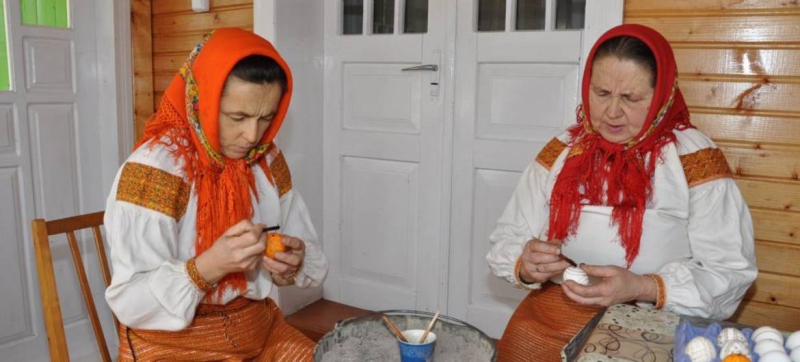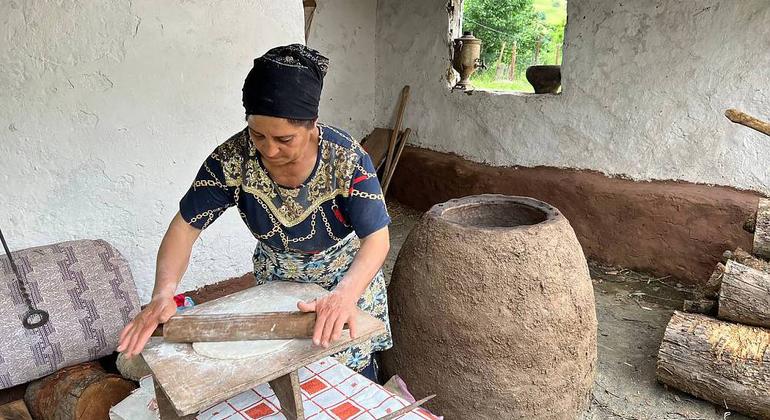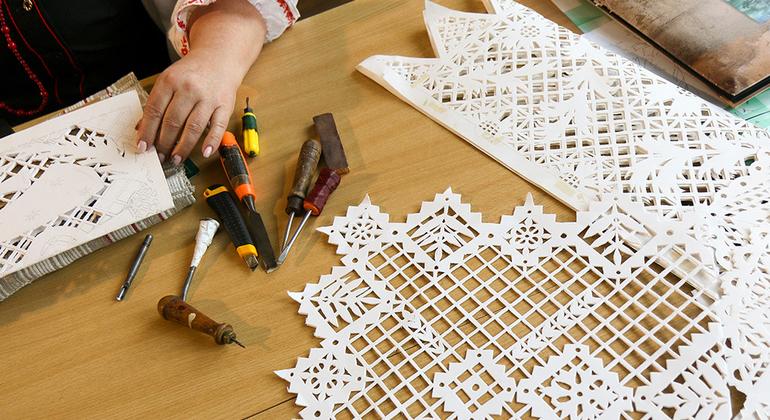
58 applications were submitted for inclusion in the UNESCO Intangible Cultural Heritage List this year. Crafts from Azerbaijan, Belarus and Ukraine inscribed on the UNESCO Intangible Cultural Heritage List Culture and Education
The Intergovernmental Committee for the Safeguarding of the Intangible Cultural Heritage of UNESCO, at its session in the capital of Paraguay, Asuncion, decided to include new elements in the Representative List of the Intangible Cultural Heritage of Humanity. This year, among others, traditional crafts of the peoples of Azerbaijan, Belarus and Ukraine were added to it.
The Representative List of the Intangible Cultural Heritage of Humanity consists of elements of high cultural value for future generations and in need of safeguarding. This year, 58 applications were submitted for inclusion on the list.
Azerbaijan: Tandoor

Azerbaijan’s application to the Committee spoke about the craft of making tandoor and the art of baking bread in it.
Tandoors are traditional pottery ovens used in Azerbaijan for baking bread, and sometimes meat and poultry. Nowadays, craftsmen make two types of tandoors: above-ground and underground.
Bread baked in tandoors is considered a guarantee of longevity and is an integral part of the daily diet of the people of Azerbaijan. Such bread can be stored for a long time.
Baking bread in tandoors is surrounded by a large number of oral traditions. Knowledge about the craft of making tandoors is passed down in families from generation to generation through oral communication and training.
Baking in a tandoor is a ritual of sorts that strengthens social ties and maintains family and neighborhood bonds. Freshly baked bread in a tandoor is offered first to guests and children. People believe that it brings harmony and prosperity to the family. Bread baked in a tandoor is also the main source of livelihood for some families in Azerbaijan.
Belarus: Vytinanka

Vytinanka is a traditional Belarusian decorative art of paper cutting. This craft originated in the 16th century and is now gaining a second wind. Vytinanka are made using scissors and special devices that are passed down from generation to generation.
Vytinanka is used in Belarus for the exterior and interior decoration of private homes, as well as cultural and public places. Decorative elements made according to the canons of vytinanka are an integral part of Belarusian holidays.
Modern vytinanka covers many topics reflecting the Belarusian way of life, such as admiring nature, as well as the history, mythology, customs and beliefs of the people of Belarus, rural and urban life. This is one of the aesthetic foundations of the Belarusian mentality and culture.
Ukraine: pysanka

The application for recognition of pysanka as an object of intangible cultural heritage of humanity was submitted to UNESCO by Ukraine jointly with Estonia.
The art of decorating eggs for Easter is a centuries-old Ukrainian tradition. Traditional designs and symbols are painted onto the egg using wax, then the egg is dipped in paint, which covers all areas except the wax. The process is repeated several times to achieve the desired design and color.
Although this tradition dates back to pre-Christian times, it has evolved into an Easter tradition over time. However, exchanging pysanky as gifts is still very meaningful to Ukrainians regardless of their religion.
Egg decorating is deeply rooted in Ukrainian identity and is still a traditional ritual in communities across Ukraine, as well as for Ukrainians living in Estonia. Elaborately decorated eggs are a source of family pride. Families develop and pass on their own special techniques and rituals associated with pysanky to their descendants.
After Easter, blessed pysanky are kept in homes as a source of protection. Others are given as gifts to mark important events such as the birth of a child, a christening, or a wedding.
